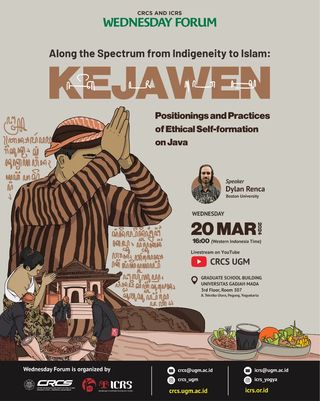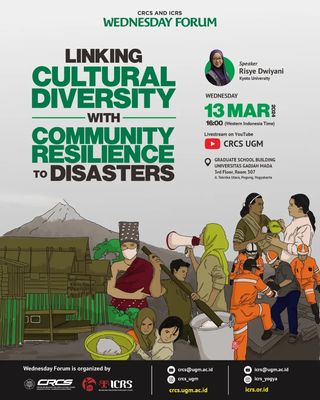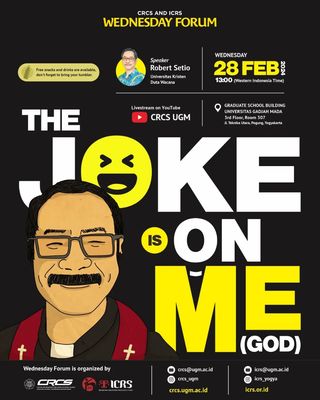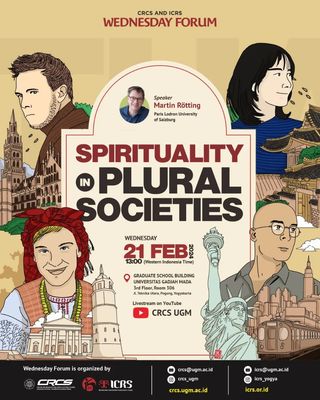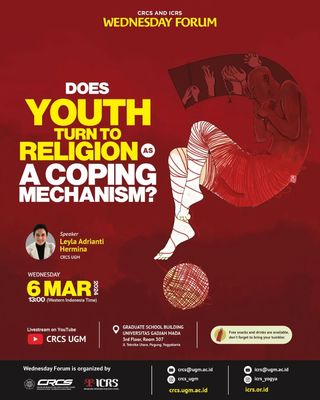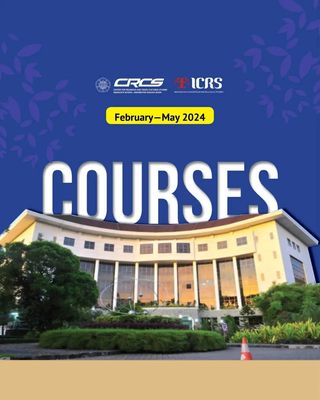
Photo illustration by: Rad Pozniakov on unsplash.com
The COVID-19 pandemic has brought many challenges and changes for society in the Indonesian context. It has especially become more challenging for women in the Indonesian context because, in terms of social position, women are seen as more vulnerable, they are faced with challenges from reproductive health, the economic downturn, domestic violence, and multiple burdens as consequences of work and school from home. This motivated a four-month research project focused on women’s experiences during the pandemic in four communities: workers, social-religious activists, women in religious minority groups, and women with disabilities. This cluster research entitled "Reshaping New Urban Living: Indonesian Women and Coronavirus" was conducted between May and August 2020 under the umbrella of a larger research project, "Religion and COVID-19" organized by the Indonesian Consortium for Religious Studies (ICRS), the Center for Religious and Cross-Cultural Studies (CRCS), with support from the Ford Foundation and Hibah Riset DIKTI. Data came from researchers in ten cities: Aliyuna Prastiti (Bandung), Petsy Jessy Ismoyo (Salatiga), Maurisa Zinira (Yogyakarta), Antonius Virdei Eresto Gaudiawan (Madiun), Lintang (Malang), Teuku Jaffar (Aceh), Subandi Simbolon (Pontianak), and Pastor Max Regus (Manggarai), Denni Pinontoan (Manado), and some informants from Denpasar, Bali, who shared their experiences through Focus Group Discussions (FGD). In April 2021, this research was presented at the Wednesday Forum, a weekly discussion hosted by ICRS and CRCS, and took the title ‘Vulnerable but Maneuverable: Women, Religion, and COVID-19’. It was presented by Ida Fitri Astuti, one of the researchers, and ICRS staff in charge of the Partnership and Engagement Unit. Astuti, holds a B.A. in International Relations from Universitas Gadjah Mada (UGM) and an M.A. from the Center for Religious & Cross-Cultural Studies (CRCS) UGM. Furthermore, her work in ICRS has led her to be connected with people from various institutions such as academia, government agencies, and NGO/FBO/CSO in the field of interfaith activities and research. In 2015, she was a graduate student fellow at the Asia Research Institute (ARI) at the National University of Singapore
This research attempts to understand women's condition and their maneuvers among social spaces that shaped urban living during the pandemic. The investigation also related to the role of women in religion especially in reimagining the elements that shape women's status. Hence, the research team proposed four questions in conducting this research. First, how do Indonesian women respond to the COVID-19 pandemic? Second, how Indonesian women's maneuvering among spaces (public, domestic, and virtual) shapes new urban living during and post-pandemic? This question is based on the hope that the pandemic will end soon when the research was started. Unfortunately, the pandemic continues. Third, how does religion reimagine Indonesian and women's status within the context of the pandemic? And the last question, how religion shapes women's religiosity within the context of the pandemic? These research questions are followed by one main argument that Indonesian women display resilience and become agents of domestic and social cohesion. They also shape urban living through their inter-spatial performance, even in the virtual realm. Women maintain creativity and find new meanings of social solidarity, but extra challenges are faced by women with disabilities in industrial structures.
Moreover, Astuti explained the limitations of research during the pandemic situation. Data collection and analysis are include literature review, interview by telephone, WhatsApp conversations, FGD, social media, and internet observation. The method of research that applied is the hybrid media space method focus on the condition of social spaces and practices among the private, semi-private and public, online and offline, domestic and communal spaces. Furthermore, Astuti also argues that the discussion with government institutions was very important in this research and was accomplished by conducting a workshop and expert meeting. The expert meeting was held before the research began to gain insights and guidance for the research. Online platforms served as research tools contributing to this project’s success, including Google Keep, Google Drive, Google Meet, Google Maps, and Google Docs. Training for these tools was facilitated by Dr. Leonard Epafras, core doctoral faculty at ICRS who also served as the coordinator for this research.
The research involved 68 women from ten cities. Among those 68 informants, 35 of them were Muslim, 15 Protestant, 10 Catholic, 5 Hindu, 1 Buddhist, and 2 adherents to indigenous beliefs. The age of the participants ranged from 24 to 57 years old, working in different sectors, from housewives to academics. The selection of informants considered those most affected by the pandemic. Meanwhile, three groups, especially social-religious women's activists, women in minority religious groups, and women with disabilities, gained little attention in much of the available research. The data analysis started from women's workers' clusters. They faced economic challenges to different degrees and the extra burden of handling domestic duties and alongside their regular jobs. This is especially true for the health workers. The most dangerous risk that they faced was the potential transmission of the virus to their own families at home and for the single women, their challenge is the undecided future and the reduction of their barriers. For social religious women's activists, they were adjusting their strategy to the limitation of movement without surrendering to the substance of their humanitarian actions. They are also generating and implementing new ideas using safe mediums for personal health aligned with health protocols. They also were discovering social and humanitarian concerns that had not yet appeared before the pandemic and use this action to treat the social change and to make it appropriate with the existing patriarchal culture in that area. For women in religious minority groups and women with disabilities, it is clear that they experienced greater challenges during the COVID-19 pandemic. There is a stigma toward people with disabilities that are unable to carry out certain activities and engage actively in social solidarity. However, both these groups are challenged to have opportunity to get deeply spiritual roots to cope problem that caused by the pandemic.
Through four months of research, Astuti explained that the team made four pivotal findings. The first finding involved cohesive agency and resilience building. In domestic and public life, there are important changes experienced by women workers. Their role changed drastically, from the workplace to household activities, the situation demanded they become cooking and health nutritionists, food security maintenance, home teachers, psychological counselors, among other roles that might split their former domestic and public space assignments. The multiple roles carried by many women during the pandemic caused their private lives to suffer. For instance, the disappearance of "me time" created a "roller coaster" emotional condition, particularly for those with limited domestic space. Related to economic variables, their mastery of electronic communication was used to support the economy because some women became new digital entrepreneurs. In terms of religion, the pandemic may elevate their religious role in the religious landscape and help to maintain a stronger relationship with family members. In societal elements, women are actively involved in social solidarity and the creation of support groups, for example, collective production of personal protective equipment like masks. They also created new social spaces like homeschooling.
The second finding is inter-spatial performance. It is clear that presence and distance matter, and women practice different modes of presence in space and also virtual distance. To survive low-income household challenges, some women seek support in the online world, transforming into digital entrepreneurs or online sellers for basic needs. When the economy remains vulnerable, women are forced to rearrange their domestic and external affairs. Regarding worship activities, it was also not easy for women in the beginning to do online worship, but after several months, they adapted to the new situation. In Manggarai, women created a network of social solidarity providing social spaces for the victims of domestic violence and created a mix of online and offline entrepreneurship to support a member of the community. For women with disabilities, during the pandemic, many of them needed personal assistance for their mobility and other necessities which was challenged by the rule of physical distancing. Therefore, most of them remained in the periphery of social life, in social activities, work, and worship spaces.
The third finding was that women with disabilities are in between commonalities and incommensurability. Women with disabilities gain limited attention from religious authorities. In general, religious institutions do not provide discourse and infrastructure to address the incommensurability. Therefore, women with a disability or people with disabilities in general are often connected with a negative stigma and negative sense, thus they need positive cultural imagination. Personally, women with disabilities, strengthened their spiritual life by doing self-religio/spiritual mobilization in which they appreciate the social solidarity from society. They also constructed their own spirituality through redefining the meaning of some religious pearls of wisdom like the meaning of hikmah, and trust or tawakal to perceive pandemics as a blessing in disguise so they have power and opportunities to re-manage their life. However, it is clear that these spiritualities are not an instant product but based on the pre-pandemic spirituality that enables them to be resilient and endure hardships. Finally, it can be concluded that women are vulnerable but maneuverable. The social transformation made by women is indeed prominent. They maintain social cohesion and resilience in the community and also at the domestic level which enables them to maneuver within the persistent gender identity. Thus, Astuti and the research team suggest that there is a great need for appreciating women's contributions, including religious recognition of their important roles in shaping domestic religiosity, and for their strategic roles as actors for community endurance.




